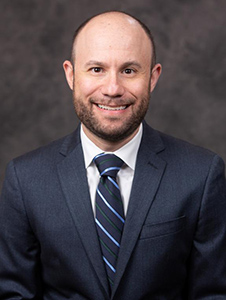The transition from inpatient psychiatric care to outpatient behavioral health treatment is fraught with elevated risk for people with histories of suicidality. According to the National Action Alliance for Suicide Prevention (Action Alliance), suicide rates are 300 times higher for individuals during the first week after leaving inpatient behavioral health care, and 200 times higher in the first month.

Jason Lippman
Keeping people connected to their care and preventing suicide after discharge, starts with scheduling an outpatient appointment for as soon as possible (within 24 to 72 hours) at a time and place that fits with the person’s lifestyle. Sadly, HEDIS data indicates that one-third to one-half of individuals never see an outpatient appointment within the first 7 or 30 days. Similarly, a recent study published in JAMA Network Open found that less than half of youth admitted to a psychiatric hospital (ages 10 to 18) received follow up care within the first week of an inpatient stay.
Suicide is a complicated public health issue requiring many entities across the health and social service systems to work together. Key ingredients to help prevent suicide during the transition from inpatient to outpatient care include:
- Immediate and continuous follow up after a visit to an emergency room or stay in an inpatient facility.
- Ensuring that family members and significant others are made aware of the appropriate steps to support their loved ones (included in appointment reminders, information related to treatment plans and ways to reduce access to lethal means); and
- Forming collaborations between inpatient/emergency departments and outpatient community providers to carry out rapid follow up after discharge.
Two important points to remember is that discharge planning begins after admission (within 24 hours) and that care does not end at discharge. People in transition from inpatient to outpatient care should be a priority, where “inpatient” continues to stay connected and “outpatient” circles back to let them know that they can now stand down.
Initiate Caring Contacts
One successful intervention called caring contacts involves making a phone call or sending a text or email a message of support within the first 24 to 48 hours after leaving the hospital/inpatient facility. Long ago, Dr. Jerry Motto at the University of California studied caring letters, showing how simple notes were enough to keep individuals connected with their providers and reassure that somebody cares about them and that they matter. An NIH study documented that sending follow up postcards “less expensive and more effective than usual care.” Greeting cards signed by the treatment staff is another thoughtful way to follow up in addition to more immediate digital means. It is advantageous to use automated features/reminders to assure on time communication of caring contacts. These notes can provide hope for someone navigating the gaps between inpatient and outpatient care and are important to hear along the recovery journey.
According to Dr. Michael Hogan, former NYS Commissioner and an architect of the Zero Suicide movement, “an affirmative message of support can be immensely powerful because suicide is a disease of isolation and loss of hope. There are lots of different approaches that can work, including calls, emails, texts, visits from friends. Even things like utilizing ‘Alexa’ are being researched.”
In most insurance arrangements, the time for caring contacts is not billable. The inpatient facility has made the referral and the outpatient provider is overcapacity. However, peer support specialists, case managers and hospital liaisons can be made available to follow up and are beneficial for helping to bridge gaps and jump over pitfalls that appear in between the ending of inpatient care and beginning of the first outpatient appointment. Additionally, clubhouses are a useful means for social support, especially if family members are no longer in the picture for care recipients.
Cutoff Lethal Means
Research conducted at Harvard University’s Injury Control Research Center shows that the suicide rate in the United States is almost twice that of homicide. Gun ownership and the availability of lethal means in the home influences the survivability of a suicide attempts, according to studies. Additionally, a strong link was found between states rife with guns and rates of suicide. In states with more guns, higher amounts of suicides occur and vice versa.
Gun sales have surged during COVID-19 with more guns in the homes of people sheltering in place, according to Every Town USA. Likewise, a recent study by the CDC shows that one in four young adults (18 to 24) had suicidal thoughts in the last 30 days, as well as over 30% of unpaid caregivers and 22% of essential workers. What will this mean for people in despair and/or under increased stress, particularly for young men with easy access to guns?
Create Seamless Care Collaborations
Over twenty years ago (in 1999), the U.S. Surgeon General issued its Call to Action to Prevent Suicide as a catalyst to the National Strategy for Suicide Prevention (NSSP). In conjunction with greater efforts dedicated to suicide prevention, the rate of suicide in the United States has steadily increased between 1999 and 2018 (by 35%), according to data collected by the CDC. With suicide rates increasing over the last 20+ years, the Action Alliance more recently worked to update the National Strategy. One takeaway is to target our efforts at areas with the greatest likelihood of reducing suicide.
Linda Rosenberg, Executive Director of External Relations at Columbia Psychiatry suggests that, “there are basic changes we can make to reduce death by suicide including increased payment rates for collaborative care (screening for mental and addictive disorders, on demand virtual psychiatric consultation and trained care managers) with required adoption by primary care practices.”
Employers, health insurers and health care providers should zero in on increasing access to affordable and effective in-network specialty behavioral providers to better enable the detection of behavioral issues and tracking of clinical outcomes early on, as detailed in a report by The Path Forward. The report recommends supporting primary care settings to address both the behavioral and physical problems collaboratively, ensuring compliance with parity laws and locking in the availability of tele-behavioral health services implemented during COVID-19.
Rosenberg also stresses the need for “communities understanding and using data (what group(s) have the highest rates of death by suicide) and focusing interventions on the highest risk groups not what’s currently trending; and neighborhoods/communities creating virtual safety nets of providers – hospitals, community clinics – that commit to no wrong door and implement seamless, personalized referrals among the safety net.”
Right now, accountability gets blurred by a fragmented system of inpatient and outpatient providers, care coordinators, health plans, etc. These entities are useful for coordinating care and linking to specialty behavioral health services, but consumers can get lost in the system, losing access to vital supports. Additionally, there exists a push and pull tension between having so many places to choose from to get help and stringing services together in one integrated setting.
Do Not Miss the Moment
The COVID-19 pandemic is devastating many people’s lives and wellbeing. The increased risk and uncertainty having elevating effects on feelings of anxiety, depression and/or suicide, especially for people who are already vulnerable to behavioral health conditions. Calls to the National Alliance on Mental Illness’ (NAMI) HelpLine are up 65% in comparison to a year ago.
The pandemic has caused the field to make remarkable speed and progress in transitioning to virtual appointments. Where it has led to more access to care and getting care, telehealth is working effectively for many. However, it involves a different framework that is more complicated with the use of caring contacts.
So, let us strengthen and buildup the system to function as a true continuum of care that can prevent suicide and other deadly maladies. There is excellent evidence on when, where, and how we can make a difference in the number of suicides and people returning to emergency departments and inpatient facilities. Hospitals, emergency departments and crisis centers can implement Safety Planning Interventions (SPI). Certified Community Behavioral Health Clinics (CCBHCs) are already required to have formal partnerships with inpatient and outpatient providers, 24-hour crisis response services and serve people regardless of their ability to pay.
In creating a more integrated, neighborhood-based safety net that connects all parts of the service delivery system, there are several cost-effective measures for suicide prevention upstream. This may hold the greatest promise for saving the greatest number of lives: inpatient and outpatient working as a collaborative team and maintaining connections with individuals during care transition to ensure continuity, shared responsibility and that somebody else out there cares.
Jason Lippman is founder and principal at Jason Lippman Solutions, LLC.






Excellent article discussing both the pitfalls that health clinicians face, and some important solutions which can mitigate many of those risks.